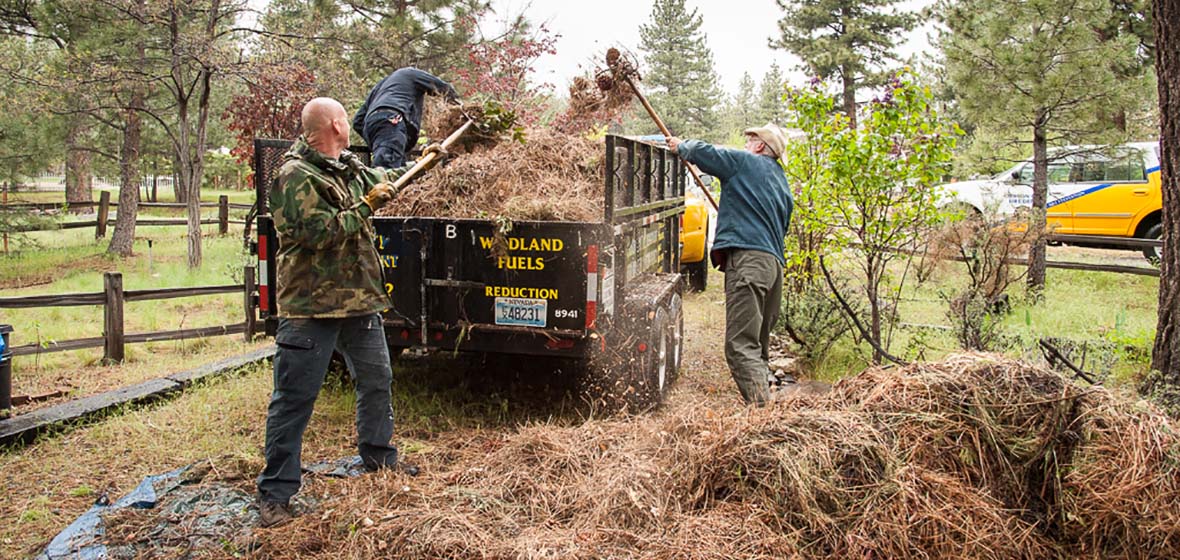Defensible space is the area between a house and an on-coming wildfire where the vegetation has been modified to reduce the threat. While creating this safer space comes more readily to mind in spring and summer, fall provides unique opportunities for managing landscapes to reduce the wildfire hazard.
Tackle these fall chores to make homes more fire safe with defensible space: control cheatgrasss, remove fallen needles and leaves and replace flammable landscape plants.
Control Cheatgrass. The fall months are a good time to use pre-emergent herbicides to control next year's crop. This is because cheatgrass seeds often germinate in late fall.
Fall-germinated cheatgrass seedlings survive the winter as small tufts of green leaves. They start growing again in early spring, sometimes joined by even more plants from newly germinated seed. Come summer when the plants dry out, cheatgrass becomes a significant wildfire fuel.
By properly applying a pre-emergent herbicide before seed germination, the following year's cheatgrass population can be greatly reduced.
Remove Fallen Needles and Leaves. Dead, dry needles and leaves are easily ignited by embers during a wildfire. So this fall, do not allow needles and leaves to accumulate on the roof, in the rain gutter or in the yard.
Replace Flammable Shrubs. The fall months are also a good time to plant new shrubs and trees. These plants establish well during the cool air temperatures and warm soil conditions that September and October provide. Prices on container plants at the nursery are usually cheaper this time of year as well. So, take this opportunity to replace flammable plants, such as ornamental junipers, growing near your home with less hazardous plants.
"Good Plant Choices for Northern Nevada's High Fire Hazard Areas" include low-growing deciduous shrubs, perennial and annual flowers, herbaceous groundcovers and deciduous trees.
To learn more about preparing the home and community for a wildfire, visit University of Nevada Cooperative Extension's Living With Fire website.
Ed Smith is an emeritus associate professor and natural resource specialist and Ashley Andrews is a communications specialist with Cooperative Extension. For more information on Living With Fire, contact the program's manager and outreach coordinator, Jamie Roice-Gomes, at 775-336-0261.













